Buddhist temples are important places of worship for the followers of the Buddha. They are also places where people can learn the Dharma and meditate. The main part of a temple is the main hall, which usually features Buddha images and an altar. People can make offerings here and bow to the Three Jewels. There are usually chairs and cushions on the floor for people to sit and meditate.
Whether you’re visiting a Buddha temple in Southeast Asia or an ancient Buddhist site in India, it’s important to remember that modesty is the norm. You should cover your shoulders and wear long pants. Cover-ups can also be purchased at some temples. You also should avoid climbing or touching Buddha statues. It’s also a good idea to ask permission before taking photos. If you’re taking photos of the statue, stay at least a few meters away.
Buddhists visit temples and shrines to celebrate Buddhist festivals and to remember the time the Buddha spent on earth. During the purification festival, pilgrims bring offerings to the altar. Candlelight and incense smoke fills the room. The priest then leads the chanting of prayers, retelling the life of the Buddha on earth.
There are numerous Buddha temples throughout the world, and some are even in the United States. While the majority of Buddhist temples are in Asia, you can still visit one in the United States. Many of these temples were built by immigrants and are dedicated to spreading the teachings of the Buddha.
Top 10 Famous Ancient Buddha Temples around the world
Haeinsa Temple

Haeinsa Temple is the head temple of the Jogye Order of Korean Seon Buddhism. It is located within the Gayasan National Park in South Korea. This temple is particularly notable for housing the Tripitaka Koreana, a compilation of Buddhist scriptures carved on wooden blocks. It has been housed at Haeinsa since 1398.
The first temple in the Haeinsa complex was constructed in the 7th century as a hermitage. This was later expanded and became the Hwa-Eom monastery, which is the current buddha temple. During the Goryeo Dynasty, King Taejo rewarded Master Huirang for helping him secure power and expanded the temple to become a massive temple. The temple attracted hundreds of monks and flourished for centuries.
The woodblocks in the Haeinsa Temple complex are a treasure. The South Korean government designated them a national treasure on December 20, 1962. They were preserved from the Japanese invasion of Korea (1592-1598) and survived a fire in 1818. The buddha temple also survived six major fires during the Korean War.
The Haeinsa Temple was founded by King Aejang in 802 C.E., the third year of his reign. King Aejang granted the site to the monks, who decided to build a new temple. These monks were the first and second abbots of Haeinsa.
Wat Arun Temple in Bangkok

The Wat Arun Temple is a Buddhist temple in Bangkok, Thailand. It is located on the west bank of the Chao Phraya River. Its name is derived from the Hindu god Arua, who is personified as the radiations of the rising sun. The temple was constructed in the 12th century, and its original structure still stands today.
The buddha temple complex is surrounded by magnificent prangs, and the temple grounds are beautiful. Chinese warrior sculptures adorn the base of the grand pagoda. The temple’s ordination hall has intricate murals and is home to the golden Niramitr Buddha image. Visiting this temple is definitely worthwhile.
The temple’s inner courtyard contains the ordination hall. It has a two-tiered roof and colorful porcelain walls with gilded borders. It also features statues that were cast during the reign of King Rama II. Below the statues are cubicles where the remains of the deceased are kept. A flight of steps leads up to a chamber containing Buddha’s footprint. The Buddha’s footprint is carved in stone and decorated with porcelain.
Wat Arun Temple is located on the west bank of the Chao Phraya River. Getting it is easy. A cab from Bangkok to Tha Tien Pier near Wat Pho will cost you about three Baht, and the trip doesn’t take very long. Alternatively, you can take a boat from Tha Tien Pier to Wat Arun.
Pha That Luang Temple in Vientiane, Laos
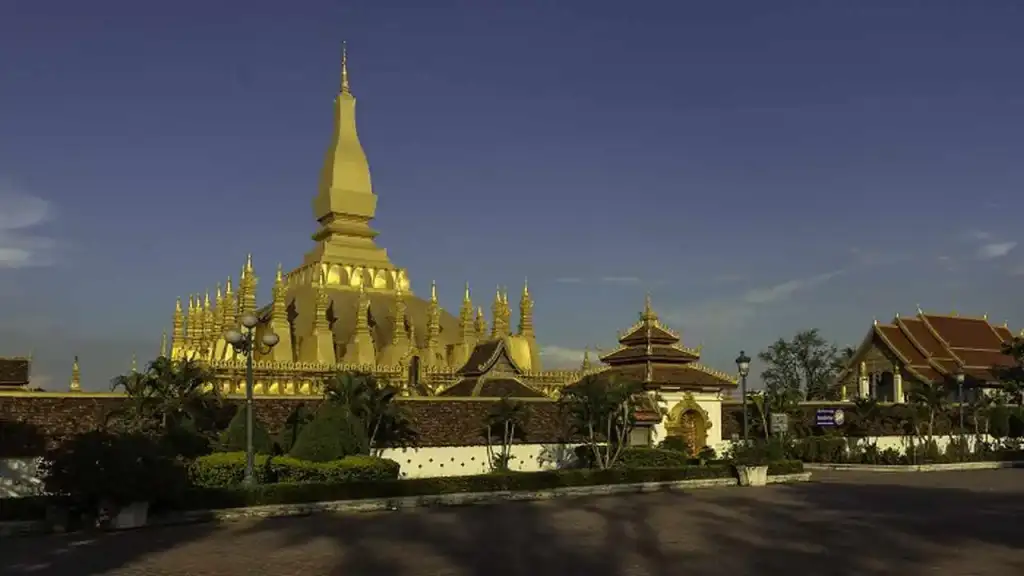
The Pha That Luang Temple in Vientiane, Laos, is a large, gold-covered Buddhist stupa. It is thought to have been founded in the 3rd century AD. Over the centuries, the temple has been damaged by foreign invasions and has undergone several reconstructions.
The Pha That Luang Temple is a 45 m-high Buddhist monument. The current stupa was built in AD 1566 when Vientiane was declared the capital of Laos. It was damaged during the Lao rebellion in 1826, but Laotians eventually restored the structure to its original design.
The main stupa is located on the third level and is 45 meters high. It is surrounded by 30 smaller stupas. The cloisters around the tower are 91 meters long. The Pha That Luang Temple’s central square gallery contains several other Buddhist structures. The Buddha’s hair and bones are buried inside it.
The Pha That Luang Temple is home to many religious events and festivals. The most important of which is the Boun That Luang Festival held annually at the start of November, which draws devotees from all over the country. This event features a grand buddha temple fair in the square and cultural and sports performances. It is the most important religious event in Laos.
The Pha That Luang Temple is located in Vientiane, Laos. This large gold-covered stupa is believed to have been built in the 3rd century AD. Since then, it has undergone several reconstructions. The buddha temple was damaged by foreign invasions in the 1930s, but it has been restored since then.
The Jokhang Temple in Lhasa
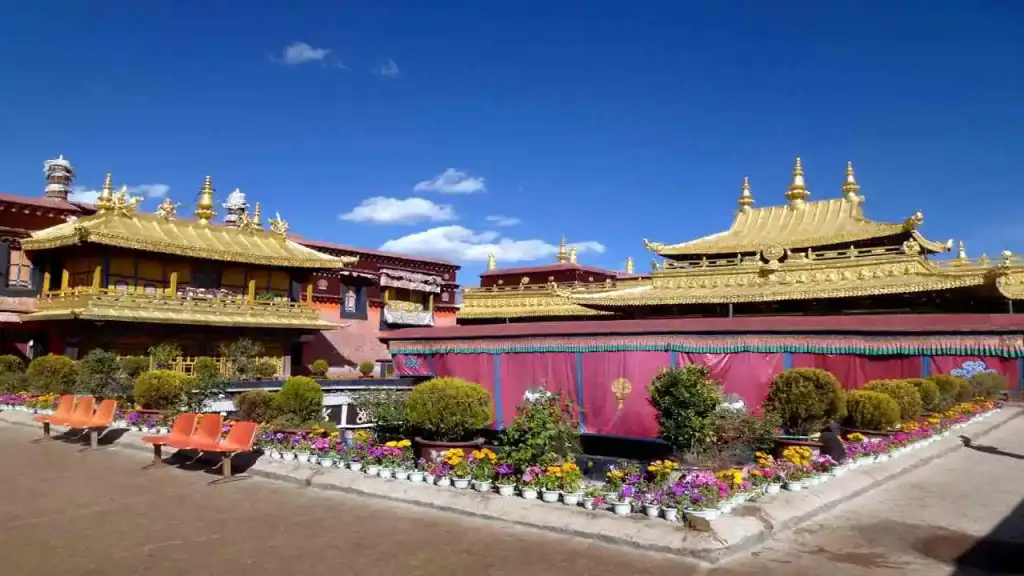
Located in Barkhor Square in Lhasa, the Jokhang Temple is the most sacred temple for Tibetans. Known by many other names, including Qoikang Monastery and Jokhang Monastery, Jokhang is the largest and holiest temple in Tibet.
The temple’s main hall is over 1,300 years old and is the oldest shrine in the complex. It is flanked by two deer and contains a large, gilded statue of Sakyamuni, the founder of Buddhism. This statue has been painted several times, and it is covered in jewels typical of Tibet.
Thousands of Tibetan pilgrims have lined up to pay homage to the Buddha statue. Hundreds of pilgrims also circumambulate the buddha temple, reciting mantras, and praying to Buddhas and bodhisattvas. Typically, the Jokhang Temple is the first stop on a Tibetan journey.
The Jokhang Temple is an architectural masterpiece. It is the first Tibetan civil structure and features architectural features from the Tang Dynasty Chinese and Nepalese craftsmen. The buddha temple has undergone many reconstructions over the centuries. Today, it occupies more than 25 thousand square meters of downtown Lhasa.
The building’s history has been tangled with controversies. King Tresang Detsen, who ruled from 755 to 797, was opposed to Buddhism and a minister of the king was hostile toward Buddhism. During the persecution of Buddhists, a 12-year-old Buddha image was hidden underground in the Jokhang Temple. In the ninth century, the Jokhang Temple was used as a horse stable.
Todaiji Temple in Nara, Japan
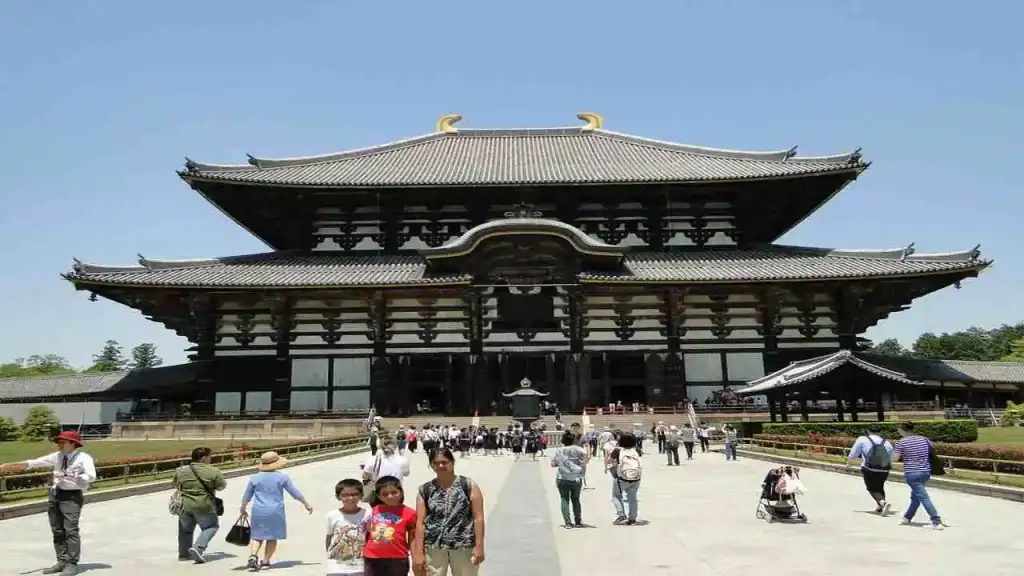
Located in Nara, Japan, Todai-Ji is a Buddhist temple complex that was once one of the Seven Great Temples. It was founded in 738 CE, although it was not fully completed until 752 CE. During the early years of its existence, the buddha temple was closed, but it was finally opened in 768 CE.
The original Todaiji complex encompassed sixteen blocks. But during the Genpei War, it was partially destroyed. This was done purposefully by the Taira clan, as punishment for the monks’ interference in politics. After the war, the Minamoto clan began a restoration. The buddha temple is smaller than it was when it was first built.
The main hall contains a massive bronze statue of the Cosmic Buddha, which is considered one of Japan’s largest statues. It is sixteen meters tall and weighs 500 tons. The Todaji Temple is an exquisite example of Tempyo Period art. It took several attempts to cast the Buddha before it was completed in 752. Its dedication ceremony in 752 was attended by ambassadors from India. The temple also contains several fine Buddhist statues, including an eight-armed Buddha.
The temple is located in Nara Park, which is famous for roaming deer. Getting to the temple by train is easy, either from JR Nara or Kintetsu Nara. From there, it takes about 45 minutes of walking.
Boudhanath Temple in Kathmandu, Nepal
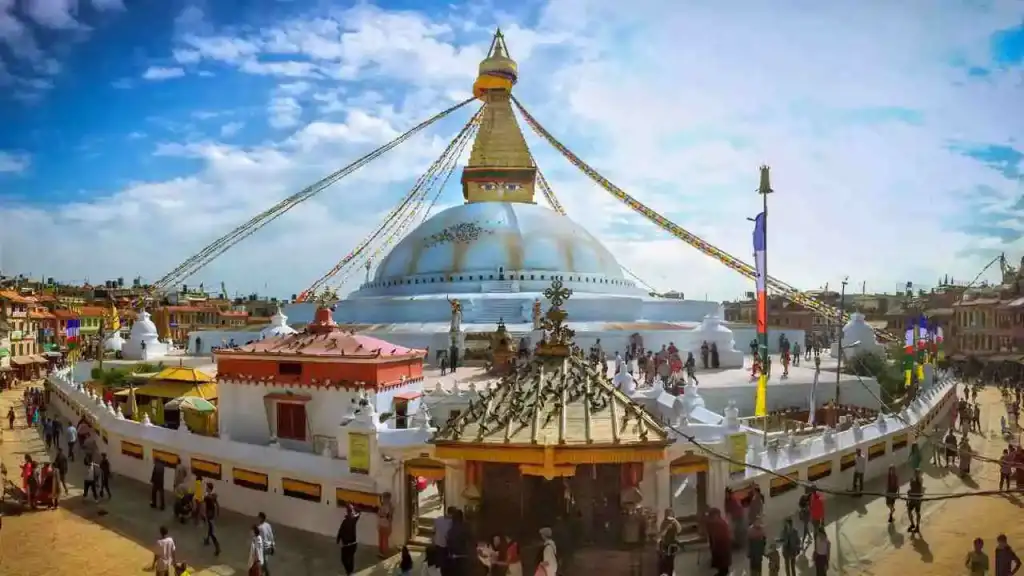
The Boudhanath Temple is a spectacular landmark in Kathmandu, Nepal. This sacred site is considered to be the largest stupa in South Asia. It is surrounded by monasteries and features a unique structure with five Buddhas inside. Each Buddha represents one of the five basic needs of living beings. It is said that by circumambulating this heavenly site, you will achieve all of your good wishes.
The buddha temple was built to commemorate the sacrifice of King Vikramaditya by his own son. According to legend, he took his Father’s life in an effort to make him happy. However, when his son discovered that his Father had been sacrificed, he asked for expungement. The priests then advised him to build a stupa at the place where the bird would land. The name “Boudhanath” was derived from this.
Boudhanath’s giant stupa is said to be the gateway to heaven. It also serves as a horizon between earth and sky. The stupa’s base is made up of three large platforms, descending in size. The top portion of the stupa is a semi-sphere that symbolizes water. The Buddha’s eye is painted on the stupa’s surface and is a symbol of compassion, empathy, and shrewdness.
The Boudhanath Stupa is a masterpiece of Buddhist art and architecture. It contains nine levels of symbolic elements, including a pyramid representing the mythical Mt. Meru at the center. The stupa is surrounded by 13 rings, which are thought to represent the path to enlightenment.
Mahabodhi Temple
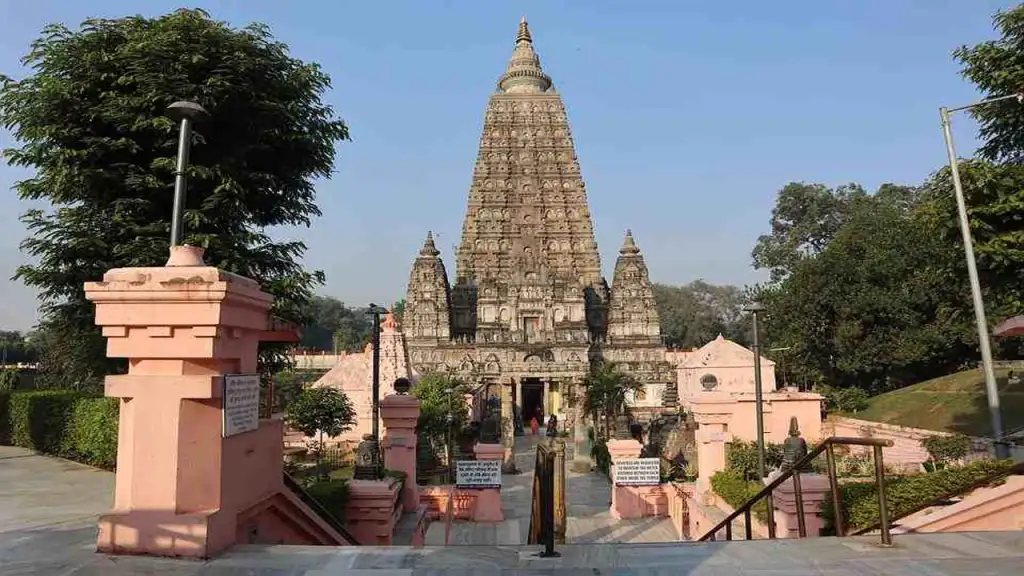
The Mahabodhi Temple is a UNESCO World Heritage Site. This ancient Buddhist temple is located in Bodh Gaya, Bihar, India. It marks the site where the Buddha attained enlightenment. It is located about 15 km outside of the town of Gaya and 96 km east of Patna.
There are many sacred places in the Mahabodhi Temple Complex. The Bodhi Tree is one of the most sacred. This tree is located behind the main shrine. You can also see the Ratanaghara, or Jewel House, in the northeast. It is one of the most important places in the temple.
The central tower of the buddha temple rises fifty-five meters. It was restored in the nineteenth century. The temple’s four smaller towers are built in the same style as the central tower. The temple is located 15 km from Gaya. The Mauryan Emperor Ashoka converted to Buddhism and built the Mahabodhi Temple. This buddha temple was completed about 250 years after Buddha had achieved enlightenment.
The sanctum contains a gilded statue of the Buddha. The seated Buddha stands over 5 feet tall. There is also a large space for meditation. Senior monks congregate here for meditation. There is also a meditation garden with fountains and large prayer bells. Whether you are meditating alone or with a group, the aura of the Mahabodhi Temple will draw you in.
Shwedagon Pagoda Temple in Yangon, Myanmar
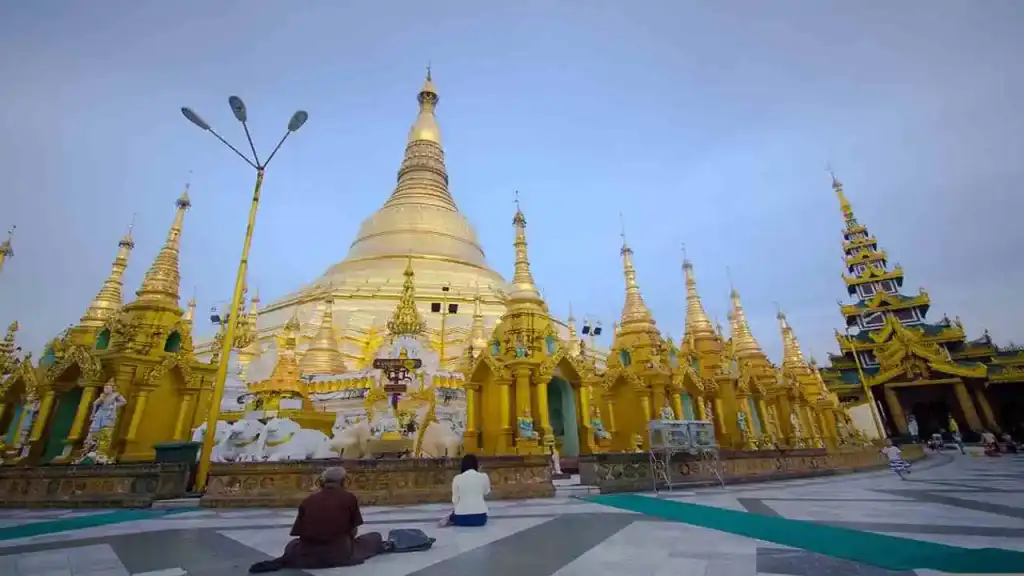
A massive stone stupa atop the Shwedagon Pagoda is the symbol of royal and religious priority in the country. The structure was built during a battle between Burmese and Mon kings in the 15th and 16th centuries. The victorious king placed his crown on the upper terrace of the stupa.
The Shwedagon Pagoda is illuminated at night. Small shops and street vendors surround the temple complex, where visitors can purchase souvenirs and religious objects. The Shwedagon is home to 1485 bells of varying sizes and weights. Once a great bell called Dhammazedi was kept in the buddha temple but was stolen by a Portuguese warlord. In fact, the bell weighed so much that it sank the warlord’s ship.
The Shwedagon Pagoda is 2,600 years old, making it the most sacred temple in Myanmar. However, there are concerns that the golden dome could deteriorate. In an attempt to prevent this, materials scientists in Belgium are investigating what causes gold to peel and are developing ways to make the dome more resilient.
The Shwedagon Pagoda is easily accessible by public transport. You can take a bus or a taxi from anywhere in Yangon to get to the temple.
Bagan Temples
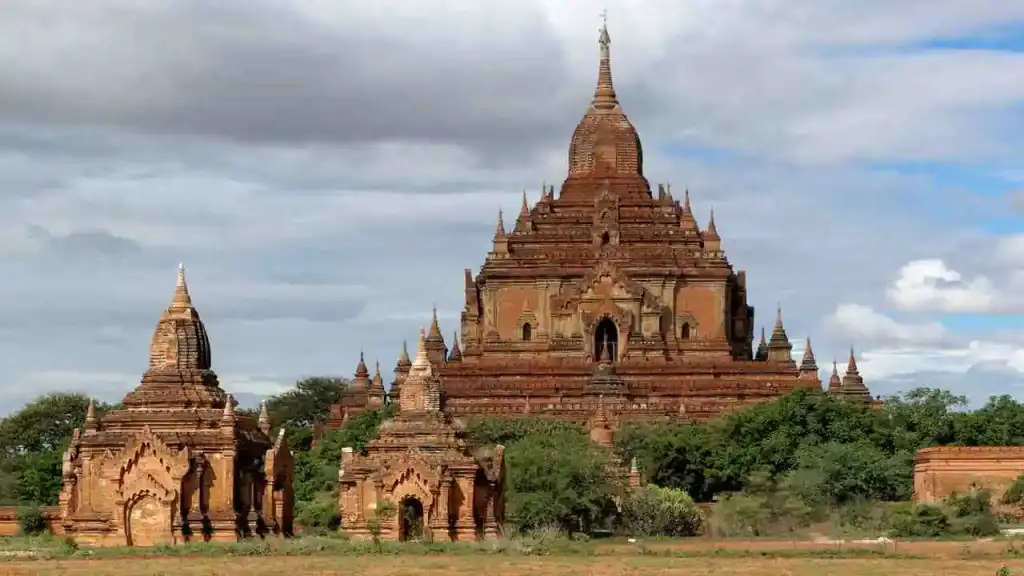
Bagan is home to thousands of Buddha ancient temples. The vast majority of the structures date back to the eleventh and thirteenth centuries, although the temples in the region were enlarged between the fourteenth and sixteenth centuries. The best time to visit Bagan is sunrise or sunset when the pagodas come to life and the hot air balloons glide over the fields. After you have seen the beautiful landscape, you might want to take a tour of the temples themselves.
The Bagan temples are in a precarious situation. After the devastating earthquake in August 2016, almost 400 of these structures were destroyed. In response, the Bagan Archaeological Department is undertaking a survey with UNESCO experts. In the meantime, the government has banned entry to 33 of the damaged structures.
While visiting the buddha temples, tourists should wear proper clothing to avoid any dangers. While climbing, they should be careful to wear clothing that covers their shoulders. In addition, visitors should avoid climbing temples with loose stones or shoes. It is also important to protect themselves from the sun by drinking plenty of water and wearing sunscreen. Snakes are not common on the main path but may hide in the bushes and have to be avoided.
The Shwezigon Pagoda, the tallest pagoda in Bagan, is one of the most impressive temples in Bagan. This golden structure is particularly impressive at night. This structure was one of the first temples to be built in Bagan. The Shwezigon Pagoda was completed during the reign of King Kyansittha. It was once one of the most important shrines in the area but has since suffered several damages. The interior contains beautiful murals depicting the Buddha’s stories.
Borobudur Temple

The ancient Buddhist temple of Borobudur was built around the year 742 CE, about 300 years before Cambodia’s Angkor Wat and 400 years before the greatest cathedrals of Europe. But as Islam spread in Indonesia, the buddha temple fell into ruin. Eventually, it was discovered and reconstructed in the 19th century. The complex is a stunning masterpiece of Buddhist architecture.
The Borobudur temple is a huge complex, covering a large area. You’ll want to wear comfortable shoes and make sure to wear appropriate clothing. The temple is incredibly hot and humid, so you may want to wear a sarong or other covering that can keep you cooler. You’ll also want to be prepared for the fact that you’ll be walking up and down many stairs.
The Borobudur temple is a world heritage site. It contains 60 000 cubic meters of stone and two million stone blocks. Originally, this buddha temple was hidden under the volcanic ash of Java. However, the temple was rediscovered by Europeans in the 19th century and has since been revered as a masterpiece of world heritage architecture.
In 1991, UNESCO listed Borobudur as a World Heritage Site, which gave it international attention. It is now one of the largest tourist attractions in Indonesia.
Here are the complete list of Buddha Temples exists around the world



